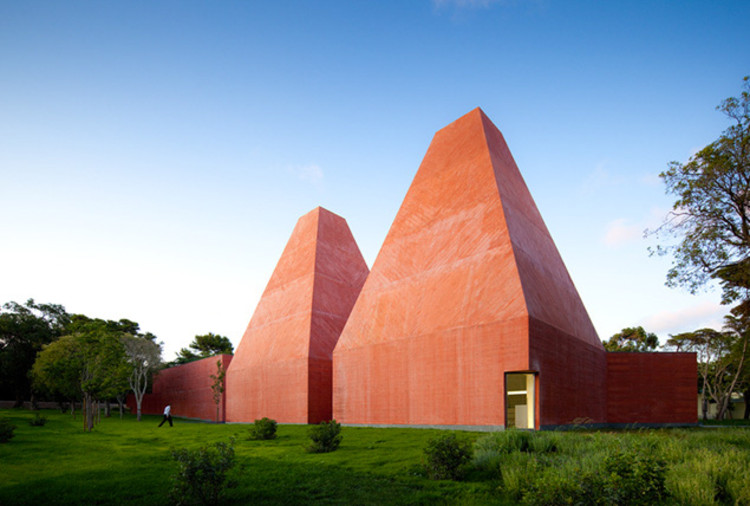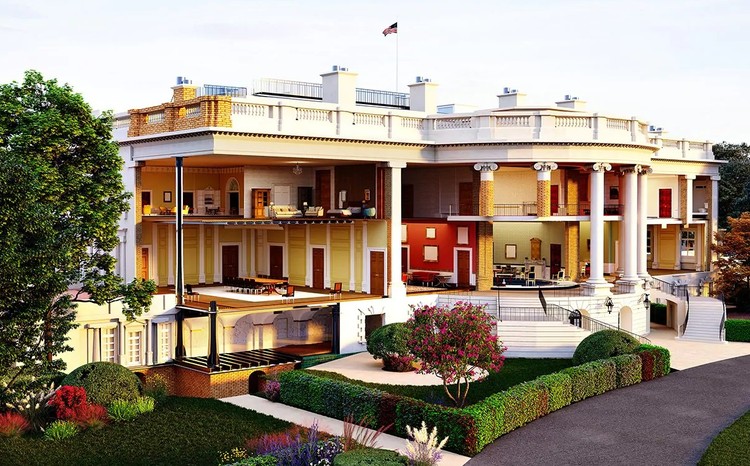
Work seamlessly with CAD and Lumion 3D rendering software for immediate model visualizations


Work seamlessly with CAD and Lumion 3D rendering software for immediate model visualizations

Known for his daring neo-futurist sculptural buildings and over 50 bridges worldwide, Santiago Calatrava (born July 28, 1951) is one of the most celebrated and controversial architects working today. Trained as both an architect and structural engineer, Calatrava has been lauded throughout his career for his work that seems to defy physical laws and imbues a sense of motion into still objects.
.jpg?1563519226)
The importance of nature and sustaining it has become a crucial feature in most contemporary projects. While some architects sustain nature by constructing with environmental-friendly material, others make way for the greenery to intervene with the structure, blurring the boundaries between man-made and Earth.
For the Chungnam Sports Center design competition, ANU Design Group created "Edgeless Sports Park", a series of oval-shaped structures that complement the hilly landscape and merge its greenery with the architecture.

Villages and cities in Iran have always had a fixed low-rise horizontal skyline due to the lack of beam and column technology. Although some cities have already adopted contemporary styles and have constructed soaring skyscrapers, but the majority of towns remain committed to traditional building techniques.
Iranian architect Mohammad Hassan Forouzanfar decided to give traditional Iranian architecture a structural upgrade but kept its main features intact. In his conceptual creations titled "Retrofuturism", the architect used traditionally-designed houses as a starting point, but introduced them to the modern world of skyscrapers and surreal forms, mixing both styles together.

Design:ED Podcast is an inside look into the field of architecture told from the perspective of individuals that are leading the industry. This motivational series grants unique insight into the making of a successful design career, from humble beginnings to worldwide recognition. Every week, featured guests share their personal highs and lows on their journey to success, that is sure to inspire audiences at all levels of the industry. Listening to their stories will provide a rare blueprint for anyone seeking to advance their career, and elevate their work to the next level.
In this episode, Brian MacKay-Lyons discusses the importance of maintaining your integrity as a designer, the lessons he learned from working closely with Charles Moore, and how he began his own firm MacKay-Lyons Sweetapple in Nova Scotia.

Kengo Kuma & Associates have proposed a new 40-story mixed-use skyscraper incorporating a historic Gothic Revival facade in Seattle. Located in the Belltown neighborhood, the project would reuse the ornate five-story Bebb & Gould’s Terminal Sales Annex facade. Made in collaboration with Ankrom Moisan Architects and the landscape architecture firm Berger Partnership, the project aims to reinforce the Gothic and Art Deco heritage of Seattle’s downtown.

The City of Utrecht Council, in collaboration with advertising agency Clear Channel, has transformed 316 bus stops across the city into “bee stops.” The adaption involved installing green roofs onto the bus stops, creating bee-friendly spaces for the endangered species.

The Royal Institute of British Architects (RIBA) has revealed the shortlist for the first Neave Brown Award for Housing, named in honor of architect Neave Brown who passed away in January 2018. The four housing developments span London, Cambridge, and Norwich, and were all winners of a 2019 RIBA Regional Award.

Bar producer Makr Shakr has unveiled new rooftop robotic bars in Milan and London. Founded by MIT professor Carlo Ratti, the company's new projects are made to engage with the city and explore the potential of technology. In Milan, the project is the city's first robotic bar, while the London bar is on display at the Barbican as part of its AI: More than Human exhibition. Makr Shakr's bars aim to combine barman roots with food tech around the future of human-machine collaboration.

This article was originally published on Common Edge.
Architecture lost itself in an identity crisis not long ago. The discipline wandered in self-reflection, reexamining how practitioners go about their work, how the built environment should appear, and why. Movements came and went. Promising paths dead-ended. Eventually, the profession gave up looking for ways out of its uncertainty, leaving us where we are today.

In premodern eras, new construction techniques, evolving opinions on art, and shifting societal beliefs drove styles. Advances were slow, but once established, became long-lived norms. The Gothic period lasted four centuries, the Renaissance three. From the nineteenth century on, though, more than a hundred aesthetic and philosophical movements lived quickly and died. As historian Charles Jencks notes, there were “a plurality of live architectural traditions” even during the International Style’s forty-year hegemonic heyday.

As an architect, critic and winner of the 2002 Pritzker Prize, Glenn Murcutt, (born 25 July 1936) has designed some of Australia's most innovative and environmentally sensitive buildings over a long career—and yet he still remains a one man office. Despite working on his own, primarily on private residences and exclusively in Australia, his buildings have had a huge influence across the world and his motto of "touch the earth lightly" is internationally recognized as a way to foster harmonious, adaptable structures that work with the surrounding landscape instead of competing with it.

Andres Jacque / Office for Political Innovation has released their design for the Reggio School in Encinar de los Reyes, Madrid. Promoted by the Reggio Center for Pedagogical Research and Innovation, the project is based on the idea that architectural environments can evoke in children the desire for exploration and inquiry.

The climate in Madrid in 2050 will look more like the climate in Marrakesh, Morocco today. Stockholm will feel more like Budapest, London like Barcelona, Moscow like Sofia, Seattle like San Francisco, and Tokyo like Changsa in China.
The research "Understanding Climate Change Starting with an Analysis of Similar Cities" published in the scientific magazine PLOS ONE by The Crowther Lab of ETH Zurich, paints a grim picture of the future for the world's urban centers.

Eduardo Souto de Moura (born 25 July 1952), the Portuguese architect that won the 2011 Pritzker Prize, is known for designs that are formally simple yet serious and at times, dramatic, created through his thoughtful use of colors and materials. His architecture is both versatile and consistent, contextual yet universal, and rarely affected by current trends or styles.

Funded by Norman Foster in 1967, Foster+Partners studio develops projects that integrate architecture and engineering with interior and object design. In a special collaboration with Porcelanosa – experts in the fabrication of furniture and accessories made out of stone, ceramic, brass, wood and KRION®–, they have designed a collection of bathrooms in simple and minimalistic ways, highlighting the essence of the materials and the trade of their fabrication.
The collection has been branded as TONO and its objects can be mixed and adapt to diverse typologies, from residential interiors to commercial spaces and offices.

Designer Honglin Li has created a proposal for a waste-to-energy skyscraper in the Great Pacific Garbage Patch. Called FILTRATION, the project was awarded Honorable Mention in the 2019 eVolo Skyscraper Competition. The modular, prefabricated megastructure contains several Material Recovery Facilities and Water Treatment Plants to recycle the floating garbage and clean seawater while taking on the world energy crisis.

ArchDaily, Strelka Institute, and Strelka KB have selected a long list of 50 architectural projects nominated for the joint ArchDaily & Strelka Award, which celebrates emerging architects and new ideas that transform the contemporary city. Now the readers of ArchDaily and Strelka Mag can vote for their favorite project to decide the finalists.

Architectural photographer Marwan Harmouche has published images of the new Paris Courthouse, designed by Renzo Piano Building Workshop. Situated on the northern edge of Paris, the Tribunal de Paris regroups various facilities previously dispersed around the capital, becoming the largest law courts complex in Europe.

Islam, other than describing a religious belief, is a word that identifies a unique type of architecture that dates back thousands of years. It has been formed by a civilization that transformed the qualities of this belief into visible and tangible material, building structures with a striking focus on details and experiences within enclosed spaces.
Islamic architecture is an architecture that does not change its form easily. In fact, its principles have been more or less the same since thousands of years ago, with minor changes based on functional adaptations. To this day, hundreds of buildings still stand as a representation of the history of Islamic architecture and are still used just as they have been in the past.
War, however, has no religion or cultural nostalgia, and even the holiest, most historically-significant sites are threatened with complete destruction. The Great Umayyad Mosque in Aleppo, originally built by the first imperial Islamic dynasty and currently situated within a UNESCO World Heritage Site, stood yet again as a battlefield during the recent Syrian War, but this time, lost its most significant and resilient element, an 11th-century Seljuk Minaret.

American home services website Angie's List has released a series of commissioned images showcasing eight United States landmarks in cross-section. Dubbed Cutaway America, the project takes a new perspective on projects that people are used to seeing from the outside. From idealistic designs that attempt to become one with nature to complex infrastructure, these cutaways hint at a longer story of America and its history.